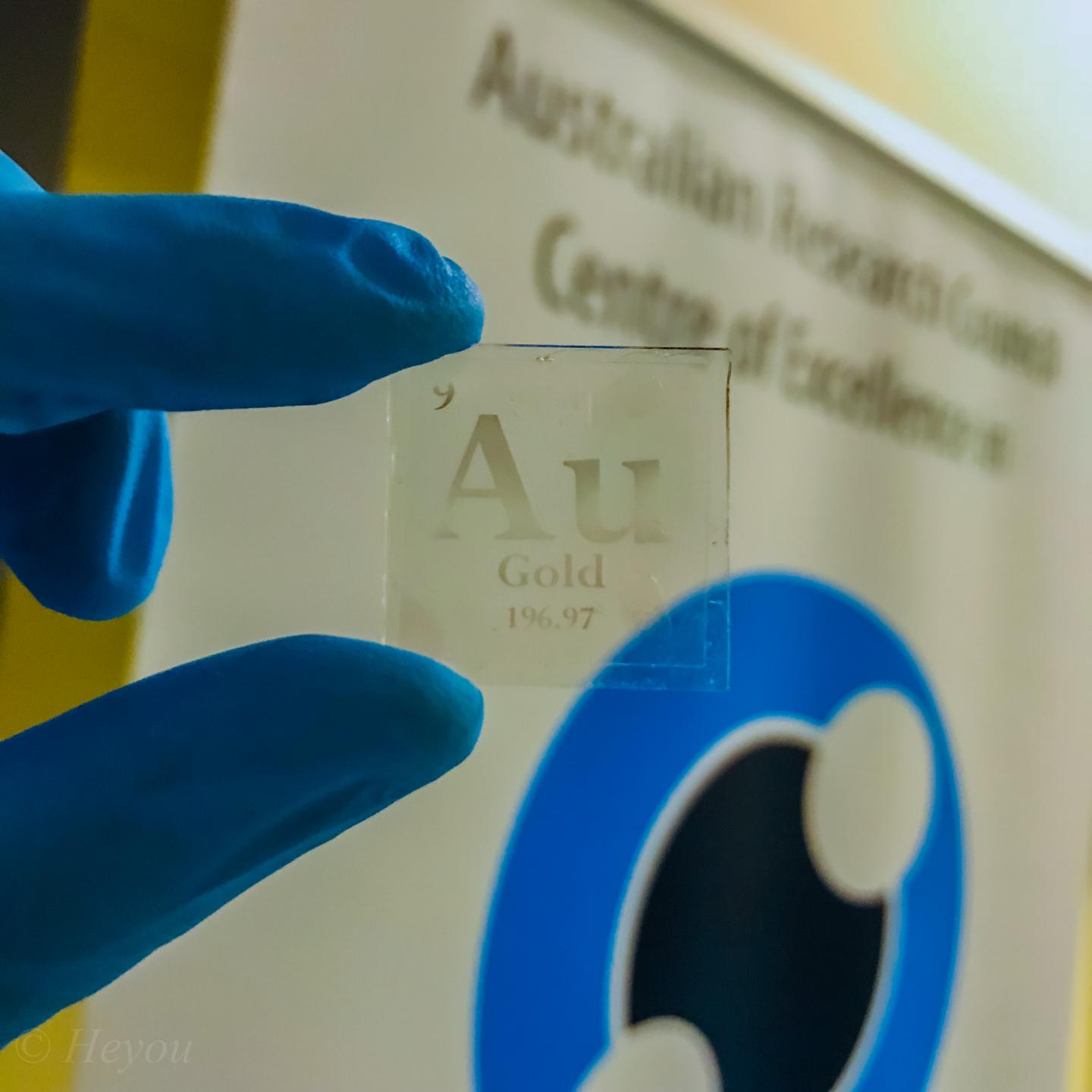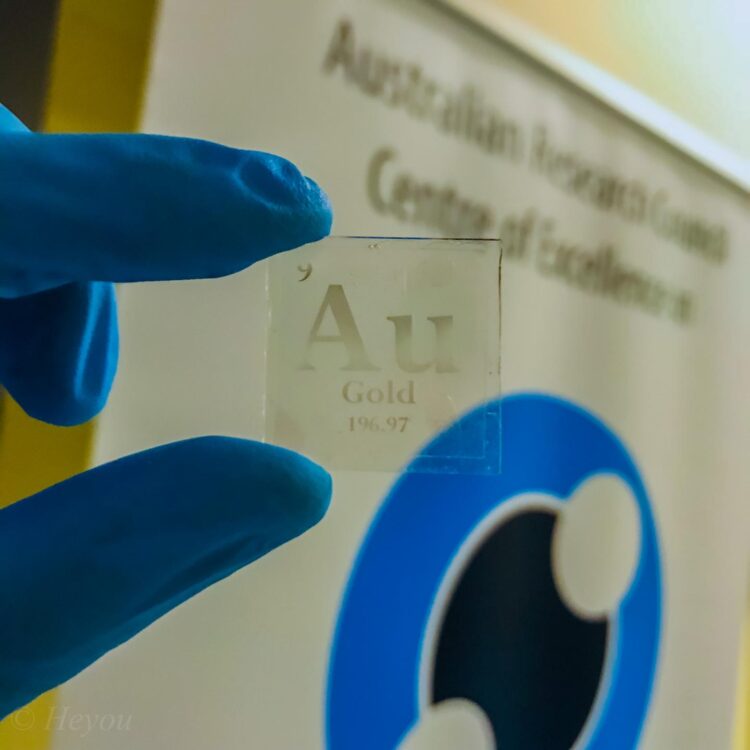Applying a specific level of electric field is a shortcut to near-perfect alignment of the building blocks in vital technologies, including integrated chips and biosensing devices

Credit: Heyou Zhang
Smart phones, tablets and laptop displays, camera lenses, biosensing devices, integrated chips and solar photovoltaic cells are among the applications that could stand to benefit from an innovative method of nanocrystal assembly pioneered by Australian scientists.
Nanocrystals have a wide range of existing and potential uses, but they are often made with wet chemical methods that present challenges when seeking to incorporate them effectively into devices.
However, researchers from the ARC Centre of Excellence in Exciton Science have demonstrated a highly efficient and controllable method to assemble single nanoparticles directly into a pre-patterned template.
They have shared the details of this technique in an article published in the journal Advanced Materials that reviews the state of the field and summarises their novel approach.
By applying an electric field at a certain level of strength, a technique called electrophoretic deposition (EPD), researchers at the University of Melbourne and Australia’s national science agency, CSIRO, were able to create a nearly perfect single nanocrystal array using either gold nanospheres or gold nanorods.
And by tweaking the potential applied to the materials as part of this field, the researchers even discovered they were able to dictate whether the nanocrystals assemble in vertical or horizontal configurations.
Lead author Mr Heyou Zhang, a PhD candidate, said: “Conventional nanofabrication methods normally produce 2D nanostructures. With the ability to assemble in both vertical and horizontal directions and with spatial control of the nanoparticles on the surface, this method provides far more opportunities to build and manufacture nanoscale structures.”
Although the manuscript focuses on assembly of gold nanocrystals, the technique has been applied to semiconductor quantum dots, magnetic nanoparticles and organic nanoparticles.
The next goal for the research is the creation of a single quantum dot “on-off” switch, which can form part of a logic gate or memory pixel for high-density information storage.
However, there is already interest from industry partners in other areas too.
“We can use assembled gold nanocrystals arrays as a plasmonic pixel, which is a colour display unit with high purity and colour saturation,” Heyou said.
“It provides very distinct colour with angle or polarization-dependent properties, which has potential as a security feature or in medical imaging.”
Heyou feels the approach has great potential as a universal nanomaterial assembly method.
He said: “We can use these particles to build up reconfigurable metal lenses, such as the lenses on your phone.
“The thickness of the lens on your phone camera is limited by optical geometries, but with this method you might be able to shrink it down to micrometre size.”
The Centre is looking for partners to help scale-up the novel EPD process.
Senior author Professor Paul Mulvaney, Director of the ARC Centre of Excellence in Exciton Science, said: “Heyou has found a novel approach to large scale fabrication for nanomaterials. This deposition method solves a fundamental roadblock for nanotechnology and creates a viable pathway for miniaturisation of both optical and electronic devices.”
###
Media contacts
Guangzhou UTC +8
First author: Heyou Zhang ([email protected])
AEST, UTC +10.
Contributing author: Dr Calum Kinnear ([email protected])
Senior author: Professor Paul Mulvaney ([email protected])
Iain Strachan, Media and Communications Officer, ARC Centre of Excellence in Exciton Science: ([email protected]); +61 476 992 487.
Paper details
Single-Nanocrystal Arrays: Fabrication of Single?Nanocrystal Arrays (Adv. Mater. 18/2020)
DOI: https:/
Journal: Advanced Materials
Authors: Mr Heyou Zhang1, Dr Calum Kinnear2, Prof. Paul Mulvaney1
1: ARC Centre of Excellence for Exciton Science, Monash University, Victoria 3800, Australia.
2: CSIRO, Research Way, Clayton, Victoria, 3168, Australia.
More about the ARC Centre of Excellence in Exciton Science:
The Centre of Excellence in Exciton Science is funded by the Australian Research Council to bring together researchers and industry to discover new ways to source and use energy. The Centre is a collaboration between Australian universities and international partners to research better ways to manipulate the way light energy is absorbed, transported and transformed in advanced molecular materials. It works with industry partners to find innovative solutions for renewable energy in solar energy conversion, energy-efficient lighting and displays, security labelling and optical sensor platforms for defence. https:/
Media Contact
Iain Strachan
[email protected]
Related Journal Article
http://dx.





